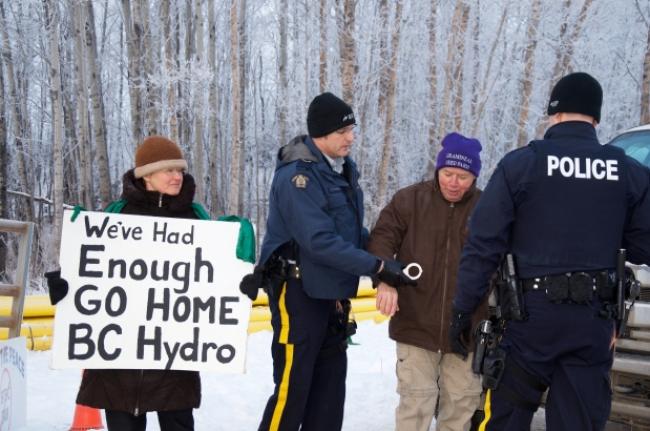Articles Menu

With its echoes of Hollywood movies, it’s not surprising that an armed uprising by white ranchers in the American West wanting free range over public land has gained international attention.
But while the ranchers and self-proclaimed militia are occupying an abandoned federal building in southeast Oregon, there’s a similar — albeit more peaceful — occupation taking place in northeastern British Columbia.
The unarmed British Columbians are refusing to leave the site where BC Hydro plans to clear-cut parts of the Peace River Valley and flood 57,000 acres of farmland in order to construct an $8.3-billion hydroelectric dam.
This is a massive infrastructure project touted by Premier Christy Clark for the nearly 2,000 construction jobs it will create and as a much-needed, clean energy alternative. In Oregon, it’s a dispute over rangeland versus parkland.
In July, RCMP shot and killed a protester outside an information meeting about the dam, known as Site C.
On Wednesday, RCMP arrested three people, including former Peace River Valley District director Arthur Hadland, according to local media. The Alaska Highway News stated he was among a group of protesters blockading two entrances to the dam’s construction site.
Hadland has long been a vocal opponent. But it is Helen Knott who is described on blog and Facebook posts as the “emerging leader and warrior.” Far from the camouflage-clad images of Bundy clansmen in Oregon, Knott’s Facebook photo shows a smiling, bespectacled young woman with a female elder.
(Knott is at the camp and did not respond to emailed questions before deadline. However, based on the photos and comments on Knott’s page, this protest appears to be an iteration of the Idle No More Movement — a peaceful protest movement largely driven by young First Nations people.)
Aboriginal treaty rights, land title, the loss of farmland and other environmental concerns sparked seven court challenges involving the dam.
Three remain to be heard or decided by the B.C. Court of Appeal. Those appeals were made by the Peace Valley Landowner Association and the West Moberly and Prophet River First Nations.
(Two other legal challenges — both by First Nations — were either discontinued or the parties have withdrawn.)
Regardless, the B.C. government issued construction permits last July after the B.C. Court of Appeal upheld the provincial environment minister’s discretionary right to approve construction without considering the recommendations of an independent environmental review.
That review panel’s 471-page report said the dam would be beneficial, providing enough electricity to power 450,000 homes a year.
But the review also noted that there would be significant negative impacts on the environment, wildlife, aboriginal people, farmers and other users of the Peace River Valley due to flooding of the valley to create an 83-kilometre-long reservoir.